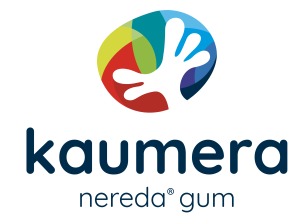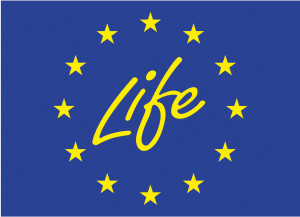Raw materials are becoming scarce, so we need to think circularly and minimise waste. That is why the Dutch water authorities are working in numerous ways to extract valuable raw materials from residual water and wastewater.
Kaumera Nereda® Gum
Researchers at Delft University of Technology discovered that a new type of raw material can be extracted from the sludge granules that form during the Nereda® purification process: Kaumera Nereda® Gum. Production of Kaumera involves two stages. The first step is the production of the Nedera® granular sludge, the next is the extraction of the raw material Kaumera.
Nereda® technology
Nereda® is a sustainable purification technology in which the purifying, active sludge does not form flakes, but granules. This makes the sludge settle much faster and easier. The technology has a high purification efficiency, takes up little space (no large settling tanks needed) and consumes relatively little energy. From the granules a new raw material can be extracted, a extracellular polymeric substance called Kaumera Nereda® Gum.
Properties of Kaumera
Kaumera can retain water but also repel it. This makes various applications possible, for example in agriculture, horticulture and the concrete industry. These include reducing the leaching of fertilisers in agriculture. As a result, crops absorb fertilisers better. They are more resilient and grow better. The water-repellent properties also make Kaumera an excellent coating for concrete floors.
By combining Kaumera Nereda® Gum with another raw material, the character of the substance changes. Kaumera is an amplifier and connector of properties. For example as part of lightweight biocomposites. This ensures that the application possibilities are practically endless.
The polymer may behave like an alginate, but chemically it is a completely different compound. It is not composed of mannuronic acid and guluronic acid, such as alginate, but is more like a glycoprotein, containing 40 to 70% protein.
A versatile name

Kaumera. It is a versatile name for a versatile product. Kaumera means ‘chameleon’ in Maori, the language of the original inhabitants of New Zealand. The chameleon is known for its colourful transformation and adaptability. This makes the chameleon a beautifully flexible, effective and versatile animal.
Two plants under construction
Currently, there are two Kaumera extraction plants being developed in the Netherlands. The Zutphen plant will be operational mid 2019. This plant uses only residual water from the regional dairy industry for the extraction of Kaumera. After the inital start up and once the plant is running at full capacity, it is expected that the plant will be able to extract 400 tonnes of Kaumera per year.
In 2020, a second Kaumera plant will start up in Epe. This plant will process communal wastewater.
Support
The construction of the raw materials plant is made possible with the financial support from the province of Gelderland, the Ministry of Economic Affairs and Climate Change (DEI programme), and the EU (LIFE programme).
National Alginate Development Programme
The recovery of biopolymers from wastewater takes place within the National Alginate Development Programme NAOP. In this programme, the Vallei and Veluwe Water Authority, Rhine and IJssel Water Authority, the Dutch Foundation for Applied Research in Water Management (STOWA), the RoyalHaskoningDHV engineering consultancy and Delft University of Technology work closely together.
All parties contribute their own knowledge and expertise needed to recover, process and market the new raw material. From laboratory research to full scale recovery. In this way, the Water Authorities, the scientific community and the business community work together on a sustainable, circular economy.
International scale
The extraction of Kaumera is easy to expand in the Netherlands and abroad. Knowledge sharing and international test cases play an important role in this. At the upcoming Amsterdam International Water Week (november 2019) visitors will have the opportunity to attend a workshop about the development and applications of Kaumera.
International test cases will provide ample evidence of replicability and transferability. As several installations for the production of granular sludge have already been built or are planned in the Netherlands and other EU countries, the EU replication factor is expected to be a factor of 100-150 over the next 10 years.
Contact
Within the framework of the Energy and Raw Materials Factory, Water Authorities, the business community and knowledge institutions work closely together to build the Kaumera Factory.
For further information, please contact Mr Philip Schyns or Mrs Sandra de Wit at the Rhine and IJssel Water Authority on telephone number +31 314 369369 or visit the project’s website
Text by Sandra de Wit


